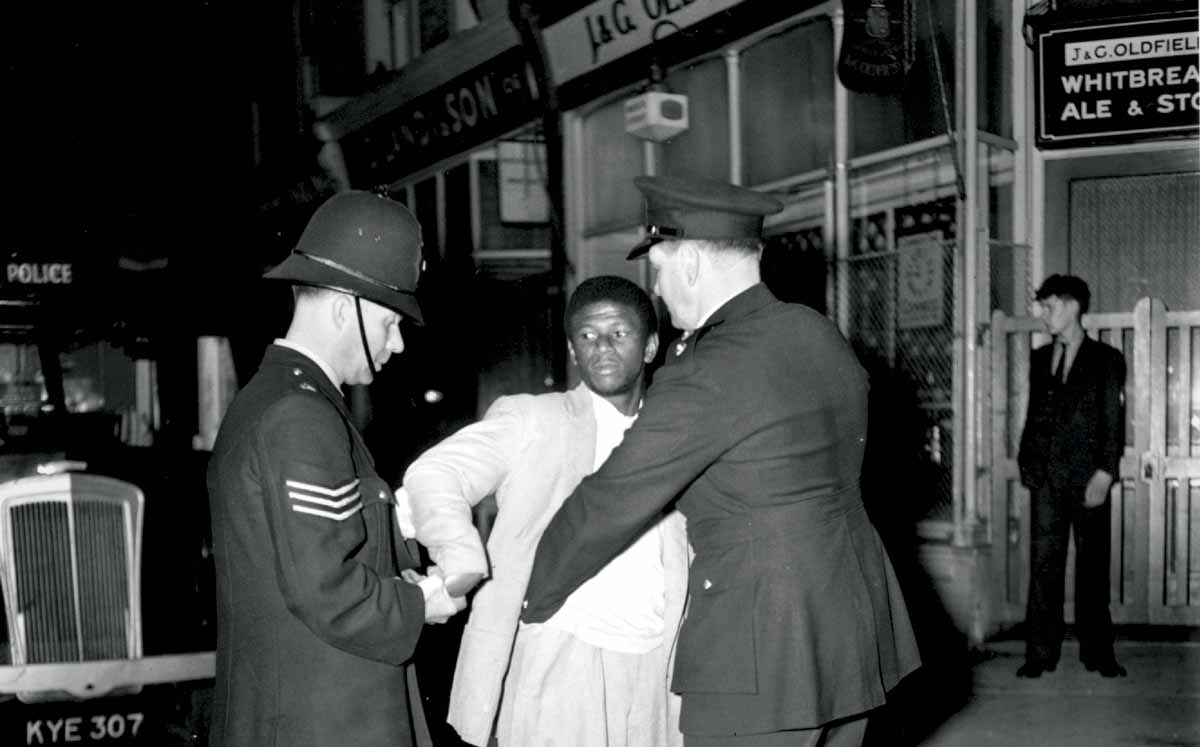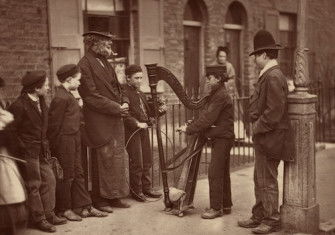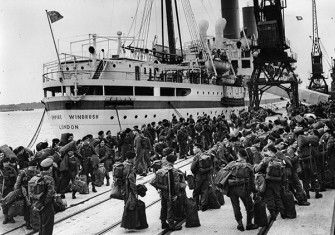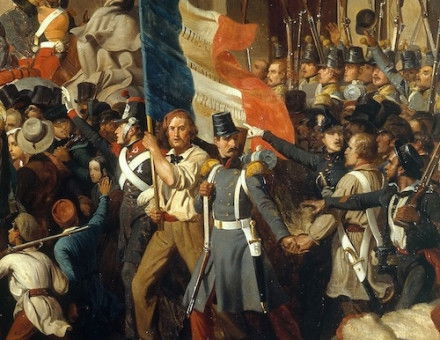Policing the Windrush Generation
Police brutality and stop-and-search are yet another legacy of Empire.

On 2 June 1959, a meeting was held in the office of the Home Secretary, R.A. Butler, to discuss the anti-black rioting in Notting Hill the previous summer. Yet, rather than focusing on the white thugs who had perpetrated the violence, the participants discussed what they saw as the crux of the problem: non-white migration to the UK. Particularly forceful on this point was the Commissioner of the Metropolitan Police, Joseph Simpson. He observed that, while Notting Hill had always been ‘disorderly’, it was the ‘concentration of Colonial immigrants’ that had aggravated existing problems of law-and-order.
Simpson’s language is notable for what it omits. The population he was referring to were not ‘immigrants’ but citizens, black Britons who rode imperial circuits to the ‘Mother Country’ in accordance with the guarantees of the British Nationality Act (1948). They were ‘concentrated,’ as Simpson described, partly because of preference but also because of the colour bar that greeted them when they arrived: the discriminatory nature of Britain’s housing market acted to confine non-white residents to Notting Hill and Brixton in London, St Paul’s in Bristol and Toxteth in Liverpool. As the colonial frontier came home, many white Britons worked hard to ensure it did not reach their doorstep.
For Simpson and other senior police officers, the issue of how to police these ‘colonial’ residents in the UK was fraught with difficulty. Some had experience policing West Indians in the Caribbean colonies; labour unrest in St Lucia and Trinidad during the 1930s and 1940s had led to a military-style crackdown that used aircraft and tear gas. The problem was the distance between the paramilitary methods ‘acceptable’ in the colonies and the unarmed, community-based policing required for the white population back home. With a substantial portion of non-white residents claiming their right to settle in the UK, the migrations of the ‘Windrush Generation’ would challenge the reassuring divide between police work in the metropole and the colonies.
At first, efforts were made to apply the ‘British’ model to these new arrivals, having the police work more closely with their communities. Yet these initiatives ran up against the reluctance of chief constables to employ non-white officers, ensuring that police could not be drawn from the neighbourhoods they served. Racist imperial ideas often lurked behind this resistance: Simpson worried that black recruits were not ‘temperamentally suited’ to the job, a view shared by the Met’s Special Branch when it referred in a report in 1959 to West Indians as ‘simple-minded people’. By 1969, just 19 black officers were employed throughout the country.
Instead of diversification, many forces opted instead for a process of ‘cultural education’ for its white officers. The Jamaican High Commissioner was invited to lecture at the Hendon training facility in 1964, where he outlined the lessons learned from policing in the Caribbean. In particular, he flagged the habit of police officers there to make ‘arbitrary on-the-spot decisions’ about a host of civil issues, such as domestic disputes or tenant-landlord relations, which lay outside the scope of British policing. For one officer in attendance, these observations were familiar: ‘I should have recalled [this] from my experience in Ceylon’, he wrote afterwards: ‘Police in the Colonies are not well liked but they are feared and respected’ – sentiments which were encouraged by these on-the-spot decisions. The officer recommended police apply this insight to ‘coloured areas’ back home and ‘be more forthcoming and decisive when dealing with coloured immigrants than would be the case with our own population’.
This willingness to draw on colonial experience was not unusual. As the researcher on policing, Georgina Sinclair, has shown, the wave of decolonisation after the Second World War sent British police officers on missions to ‘hot spots’ across the Empire, tasked with temporarily assisting efforts to put down anticolonial insurgencies. These officers then drew indiscriminately on their experiences controlling non-white populations when they returned home.
The result was that a two-tiered system of policing developed in the UK – one based on the skin colour of those being policed. As one officer recalled to historian James Whitfield about policing black communities during this period: ‘It was still very much a colonial approach.’ In practical terms this meant that minority ethnic communities found themselves subject to police brutality, more frequent acts of stop-and-search and more intensive surveillance of their social clubs and political activities. Indeed, it was resentment against such practices which provided the spark for the uprisings in Bristol’s St Pauls neighbourhood in 1980 and those that swept through Brixton and Toxteth the following year.
Explaining these disturbances, community leaders consistently pointed to invasive police practices. One group from Toxteth told Prime Minister Margaret Thatcher when she visited in 1981 that ‘policing had to be done with the cooperation of the community’, yet Merseyside police simply ‘regarded anyone who was black as criminal’. They wanted ‘community Bobbies’, not colonial-style police segregated from the community. Thatcher’s own priorities, however, were made clear during a meeting she held the same day with Liverpool’s chief constable. She assured him ‘that whatever equipment they required to deal with the situation should be given to them’. This meant riot shields, tear gas and water cannon.
This formed part of a broader trend towards police militarisation during the 1980s – a process which once again was energised by the legacy of Empire. Crowd control techniques and riot-control weaponry were tested in the ‘colonial laboratories’ of Hong Kong and Belfast before being used at home to quell urban disturbances. This migration of imperial methods appeared to violate British policing traditions. Yet as the historian Erik Linstrum has shown, it was legitimised by the fact they were initially deployed against the Afro-Caribbean residents of Toxteth. Media descriptions of the ‘savagery’ of the rioters legitimised the violent police response by slotting it into the familiar narrative of colonial pacification.
Reforms were introduced after these uprisings to try to repair relations between the police and minority communities. Despite this, a government inquiry called after the murder of Stephen Lawrence could still in 1999 label the Metropolitan Police as ‘institutionally racist’. Today, numerous studies on the impact of stop-and-search show that there remains inequality in how ethnic minority communities are policed. With the increasing salience of law-and-order and police powers to British politics, understanding the history of how colonial policing came home can help inform current debates on law enforcement. Here is an area where – like so many others – Britain lives with the afterlife of Empire.
Sam Collings-Wells is a PhD student at the University of Cambridge studying policing in the Empire and the UK.






